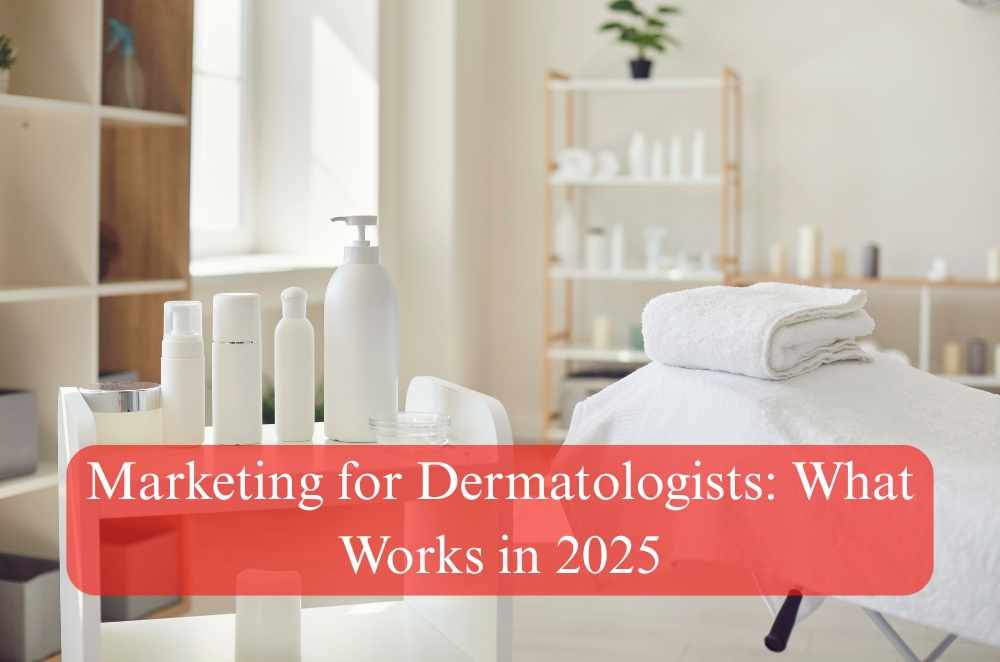
Running a dermatology practice in 2025 means more than offering great clinical care—it means knowing how to connect with the people who need it most. That connection starts with visibility. The landscape has shifted: word of mouth still matters, but it’s digital presence and trust-building that drive growth. A well-executed strategy in marketing for dermatologists can make the difference between slow days and a full appointment calendar.
In clinics across Australia, practitioners are facing new challenges. Some have been in the field for decades and are just now adapting to digital tools. Others are setting up for the first time, trying to make their mark without overspending. Either way, the playbook is changing, and understanding what’s working in today’s climate is essential.
Why marketing feels different now
It’s not just about placing an ad or boosting a post. Patients are more informed, more cautious, and more selective. They check online reviews. They scroll through websites looking for answers before they ever click “book now.” The role of marketing has moved from “attention-grabbing” to “trust-building.”
What’s driving this shift?
Increased patient autonomy and research habits
Competitive local search rankings
Stronger focus on ethical, transparent advertising
Saturated social media platforms with mixed-quality content
Rising importance of mobile-first digital experiences
Being present isn’t enough. The message has to feel real, and it has to follow a clear path from awareness to conversion.
Building credibility before promotion

One common mistake dermatology practices make is jumping straight to advertising without establishing a digital footprint that communicates reliability. Before launching any campaigns, it’s important to get the fundamentals right.
Here’s what that looks like:
A clean, mobile-responsive website that loads quickly
Clear descriptions of available services
Staff profiles that highlight experience and credentials
Online booking options or inquiry forms
Contact details that are easy to find
Patients often decide in the first few seconds whether a clinic feels trustworthy. Even subtle things—like using real clinic photography over stock images—can improve engagement and conversions.
Understanding the rules: compliance matters
In Australia, health service promotion is tightly regulated. Any claim, image, or testimonial used in marketing needs to follow specific standards to avoid misleading or creating false hope.
Being aware of advertising guidelines is critical for staying compliant while still being visible. These guidelines outline what’s allowed and what can lead to breaches, including:
Avoiding the use of testimonials
Ensuring all claims are evidence-based
Not creating an unreasonable expectation of benefit
Providing clear disclaimers where needed
Keeping all advertising accurate and up to date
Falling foul of these rules doesn’t just risk fines—it undermines the trust that patients place in you as a healthcare provider.
Content that educates, not just sells
In dermatology, the difference between success and noise is often found in patient education. The most effective marketing strategies focus less on “selling” services and more on helping people understand skin health.
This can take many forms:
Blog posts explaining common skin concerns and treatments
Social media videos showing pre- and post-treatment care tips
Infographics detailing steps for skincare routines
Short-form content breaking down terminology like "rosacea" or "actinic keratosis"
Email newsletters that address seasonal skincare trends
When content feels useful, people are more likely to engage—and more likely to remember the provider who helped them without pressure.
Paid ads: still effective, but only with a strategy
Google Ads and Meta platforms can still bring in consistent leads, but they aren’t magic. In 2025, ad campaigns must be tightly aligned with real patient needs and highly targeted to avoid wasted spend.
What’s working right now:
Localised search campaigns targeting service + suburb (e.g., “acne treatment Melbourne”)
Retargeting ads for website visitors who didn’t book
A/B testing ad copy and imagery to improve click-through
Direct landing pages with one clear call to action
Strong use of location extensions and mobile-optimised formats
There’s no one-size-fits-all formula. What matters is matching the budget to intention and tracking what performs.
Organic search: the slow burn that lasts
While paid ads generate quick wins, organic traffic builds staying power. Clinics that rank well for non-branded search terms (like “eczema treatment Brisbane”) tend to see consistent bookings, even during ad lulls.
To compete, SEO must be more than keywords. It should include:
Fast-loading web pages
Schema markup for services and location
Content that matches search intent
Consistent Google Business Profile updates
Internal linking to service-specific landing pages
This long-term effort often becomes a clinic’s most valuable digital asset over time.
Where patient growth strategies stand out
Some dermatology practices are getting creative with how they attract and retain patients. The most successful ones treat growth as a journey, not a single campaign.
Tactics gaining momentum include:
SMS follow-up reminders for recurring skin checks
Personalised skincare plans based on consultations
Seasonal promotions tied to UV awareness or allergy seasons
Patient referral programs that reward loyalty without breaching advertising rules
Telehealth consults for initial skin assessments
These kinds of approaches are explored in more detail in broader discussions around private practice patient growth strategies, where digital and offline tools come together to support consistent growth.
What matters most in 2025
Marketing in dermatology isn’t about volume—it’s about timing, tone, and trust. The clinics seeing the strongest results are those that build value from the first touchpoint. They focus on education rather than pushing services, prioritise access and simplicity in communication, and maintain consistent messaging across digital and physical spaces. More importantly, they don’t lose sight of the fact that this is healthcare. Marketing here carries weight. It influences choices about skin health, self-esteem, and long-term well-being. That responsibility shapes every ad, every piece of content, every follow-up email. And in 2025, that blend of integrity and strategy is what sets the leaders apart.





Write a comment ...